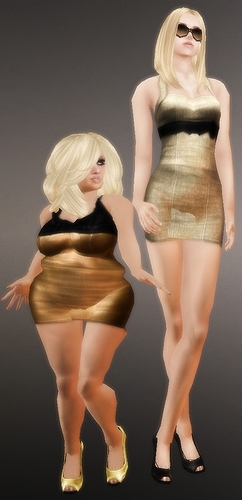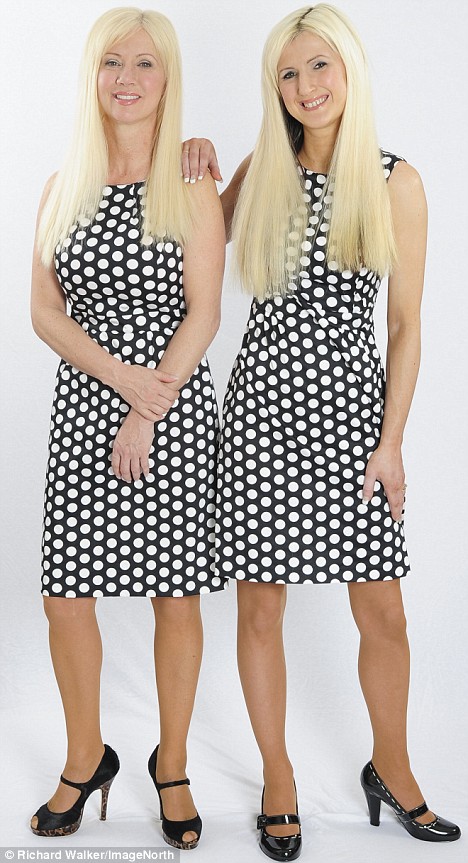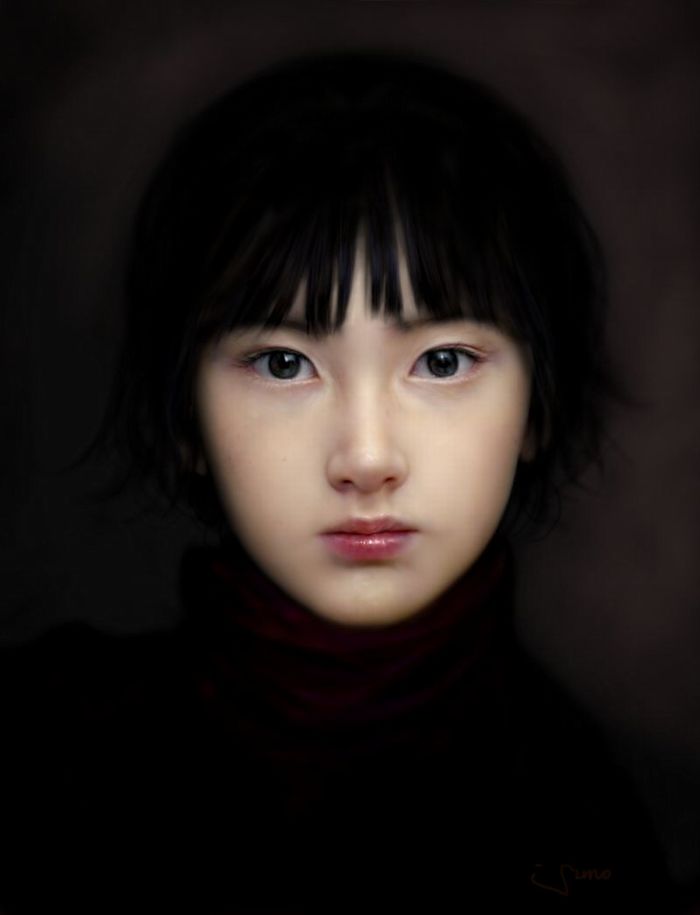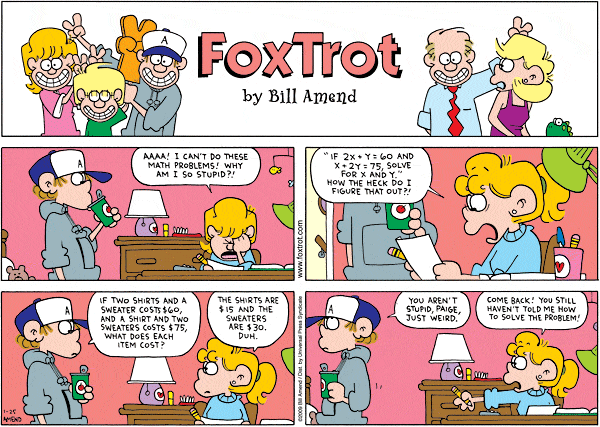Achieving The Avatar
Achieving the Avatar
The idea of their being a thin (and possibly thinning) line between “real space” and cyber space definitely struck me the hardest when in class, as did the thought that we may even be carrying our own avatars around with us in the real world. The possible mesh between the two spaces brought me back to my very first paper for the course, Achieving a Market, when I discussed cosmetic surgery as a sub technology within the confines of a larger technology–particular markets. I then began thinking of an “avatar market” as a possible link between the real world and the cyber world which ultimately serves to weaken the barrier between the two.
According to the OED, an avatar is a manifestation in human form. Thus, if online we use the word to represent “the self” (or some aspect of it) in digital form, it is no surprise that the market for flesh avatars carries over into the real world. For the purposes of this paper (as with the first) cosmetic surgery, while a technology, serves as the catalyst for people to market themselves the avatar of their choosing both in digital and real spaces. While the surgeries “enhance” the flesh, make it malleable for the sculpting, the focus is on the technology of the avatar market and how it is established in both the digital world and in the real world. The flow of information between the two worlds via the avatar market creates a link which allows online/digital users to customize (market) their avatars in order to represent some portion of themselves online, and in the real world, the equation flips and brings people to customize (market) their bodies in order to more snugly fit themselves behind their choice of avatar(s), again for sake of representation. I suppose the market implies that no matter the world, virtual or real, people may simply want representation, to have a voice in it.
In the case of digital avatars, a user can create these virtual representations on a number of different sites or from a number of different programs. Online games such as Second Life and World of Warcraft are known for the complexity and customization options of their 3D avatars. Yet, the fact that these representations reside in the digital world does not prevent players from investing “real” emotions into them and forming a “real” attachments, which illustrates the proximity of the two worlds. For example, in the article My avatar’s so-called life, Leslie Katz admits her shame of wanting to stray from her normally casual ensemble of jeans and a tank top when her avatar entered Second Life. According to Katz, the fact that “the other avatars in the room look[ed] so dazzlingly fabulous in heels, feathers and flouncy skits,” made her want her share of dressy outfits. Though her avatar was merely bits of pixilated data interacting with other data bits, a rather real “fashion-consciousness” still managed to take hold of her and transfer into cyberspace. Furthermore, according to Kristina Dell in How Second Life Affects Real Life, during her first visit to Second Life, she spent a half an hour attempting to make her avatar look like “a hotter version” of herself. When her sister came into the room and noticed her creation, she questioned “Why’d you make your avatar ugly?” which flattened Dell’s self-esteem, the self-esteem that had made its way via the link of the avatar market, through the barrier that separates the two worlds and had downloaded itself into her digital representation. After her sister’s comment, she immediately logged off.
Further in the article, Dell included a study from Stanford University’s Virtual Human Interaction Lab (VHIL) where researchers suggested that even qualities acquired online can also find their way into the real world—even 90 second interactions between avatars were enough to elicit short term changes. In one set up, 50 volunteers were recruited and then randomly assigned a short or a tall avatar before being instructed to divide a virtual pool of $100 with another participant. One payer would first make a suggestion on the split, while the other could accept or reject the offer. If the offer was rejected, then neither player received money. Those with the taller avatars bargained more aggressively than shorter ones and the shorter avatars were twice as likely as the tall to accept unfair splits. When the subjects bargained face to face without digital avatars, those that had the taller avatars continued to bargain more aggressively even if their actual heights did not match those of the avatar. Thus, again, information from both worlds find ways to cross the shaky boundary between them through the avatar market.
From real-life qualities entering the digital world via the avatar market and vice versa, we can go a step further than people attaching real world feelings to their digital selves. The appropriately titled article I can’t help it—I wish I were my avatar, reports the feelings of Winda Benedetti who admits that her “mini me” has “flawless hair and skin.” Though Benedetti’s avatar is short, like her, it is “more attractively proportioned.” The avatar’s nose is also prominent like hers, but more “statuesque.” As Benedetti illustrates, people can feel such a connection to their avatars that they desire their real space representation to match the digital. Just as in real life, where one can develop a critical eye for their own appearances, that same eye transfers over the virtual/real barrier in order to inspect their blemish-free virtual representations.
 Next, the digital critical eye mirroring the real eye can cause uses to thread further into familiar (digital) waters. The article Can A Female Avatar Be Too Thin? reveals the Internet-based subcultures of “Thinspo” and “Pro-Ana,” both of which promote anorexia as a lifestyle. For example, the Second Life Flickr screenshot-sharing group “Thinspo!” only accepts images of thin avatars. In the article, Penny Patton claims “You can get seriously harassed in Second Life for not having single digits on the belly slider.” Rose Barthelmess then adds “I’ve got my belly set to 32 and my hips at 63.…I’ve had people walk RIGHT up to me in a crowded club…just to say ‘Holy shit, you’re a fatso.’” The digital critical eye, like its real counterpart, also feeds the users the drive to customize/re-customize or fix the digital form of the avatars representation, whether it be to make a thinner avatar in order to be a part of “Thinspo” and reflect pro-anorexic beliefs, or to correct more than simply weight.
Next, the digital critical eye mirroring the real eye can cause uses to thread further into familiar (digital) waters. The article Can A Female Avatar Be Too Thin? reveals the Internet-based subcultures of “Thinspo” and “Pro-Ana,” both of which promote anorexia as a lifestyle. For example, the Second Life Flickr screenshot-sharing group “Thinspo!” only accepts images of thin avatars. In the article, Penny Patton claims “You can get seriously harassed in Second Life for not having single digits on the belly slider.” Rose Barthelmess then adds “I’ve got my belly set to 32 and my hips at 63.…I’ve had people walk RIGHT up to me in a crowded club…just to say ‘Holy shit, you’re a fatso.’” The digital critical eye, like its real counterpart, also feeds the users the drive to customize/re-customize or fix the digital form of the avatars representation, whether it be to make a thinner avatar in order to be a part of “Thinspo” and reflect pro-anorexic beliefs, or to correct more than simply weight.
Thus, we arrive at the desire to fix digital flaws similar to the way a person in real life would want to fix “flesh flaws.” When rumored Xbox 360’s “avatar creator” images were leaked on the internet, an online forum member commented that the chart looked like a plastic surgeon’s chart. Indeed, there were options for types of lips, noses, chin, eye brow arches and more. Customization options for these types of 3D avatars mirror the options available for those attempting to customize themselves in order to fit behind a flesh avatar in the real world. Moreover, images and options reminiscent of plastic surgeon charts for digital avatars bring about online forum posts such as “My avatar needs plastic surgery.”
The post contains the frustrations of one particular Second Life user who did not want their female avatar “to look like every other one.” However, the more they tried to “modify” the avatar’s face, the “uglier [it] got.” Perhaps this is one of the forces behind the avatar market: the desire to be exotic and different, a desire that again, due to the avatar market’s joining capabilities, finds itself in both worlds. In response to the frustrated user’s comment, another user sympathized stating “I am surprised at what a difference appearance makes. I realize in [real life], I’m pretty vain about my appearance, and I guess it carries over to my [Second Life] as well.” The second user’s comment again highlights how the avatar market links together the two worlds, with information from the critical eye flowing between both worlds via the link the avatar market provides. For the original user, the market allows the real space term “of plastic surgery” to transfer over into their digital vocabulary when concerning her avatar. In order for the user’s digital representation to better portray his or herself online (that is, to be different from the other avatars) they needed to fix it via “plastic surgery.” In this avatar market, the user trades in a correctly sculpted/customized avatar for a piece of representation online.
The avatar market, however, does not only draw together online space and real space, but includes different kinds of digital spaces. The Sims 2, created by Maxis, is a computer simulation game (though it has branched out into other gaming systems) that allows for its players to control the entire lives of virtual people called Sims. Not only do players customize ever single aspect of their Sim’s appearance, but they also make choices from where the Sim lives, to their careers, who they marry, the sizes of their families, etc. While these virtual humans may not seem like traditional avatars, the player creates the Sims from a broad range of customization options and then controls the Sim’s every action: the player and the Sim are connected because the Sim’s actions represent the user’s intentions. Moreover, on the actual Sims website, online avatars consist of Sim-like characters; however, the main avatars are the in-game Sims.
Thus, due to the avatar market, forum posts such as “Fixing Ugly [Sim] Children” pop up in online help forums. In the case of this particular post, the player explained that their two adult Sims are “not bad-looking,” but that they “have 5 HIDEOUS children that basically all look the same.” According to the same player, they “have tried fixing this ugliness by changing [the Sim children’s] appearance…with different haircuts and makeup, but [the children’s] facial structure and nose size [are] just plain awful.” In the Sims, one can “unlock” a plastic surgery “machine” after completing a particular career track in order to reconstruct the face of an already created Sim, yet to this particular player’s further frustration, the technique can only be used on adult Sims which leaves the player on the forum begging for another way to fix the children so that “they won’t be so ugly.”
This user is not alone. Personally, I have seen more examples of the frustration caused by the avatar market in Sims gaming. Online, there are groups that create Sims and then take photos of the game play that highlight important events (such as when the Sim first moves in, meets potential love interests, has first kiss, gets first job, has first child, etc) with comments included under each picture in order to tell a “story“ (the players dub these stories “legacies”). From reading many of these legacy stories, I began to notice a pattern that came about whenever a Sim couple was expecting a child. Many players would hope for “cute” children who would then retain their good looks as they transitioned into teen-hood and adulthood.
For those unfortunate players, such as the one previously mentioned, when their Sim’s grew into a child deemed unattractive, the disappointment was quite apparent: players would complain about the children’s looks, especially since many of them had gone through the trouble of perusing a decidedly attractive spouse for their Sim in order to have two attractive Sims procreate and produce “cute” children. Players in these Sim legacies, when faced with unattractive Sim children, include pictures featuring their attempts to fix the children with heavy makeup and strategic hairstyling in order to hide unwanted features. While such techniques and mindsets always appalled me, when examining them under the extensive avatar market in real and digital space it is apparent that the critical eye, again follows. When users post pictures of their Sims online, the Sims become even more similar to traditional avatars: their Sims represent the creativity of the player and thus, a part of that player Therefore the user’s critical eye, when faced with disappointing Sim-avatars produces the need to fix the avatar, to re-customize their Sim children, in order to better represent themselves in a digital space. They trade in the avatar for creativity points.
However, because the avatar market draws the real space to the digital space by providing a link for information flow (real-life emotional connections, the critical eye, etc.) between the two worlds, another way the market allows for digital spaces to interact with real spaces is by transferring the concept of avatars over into the flesh. Most people have a way they want to be perceived and represented (whether they are using their “teacher” avatar, or their “student” avatar, “son” avatar—the avatar market is vast, and after all, people in digital spaces can have multiple avatars) but for some, the critical eye, just as in the online word, brings out the desire to fix, or re-customize one’s self in order to better fit the avatar they want representing them. In the digital world, the avatar market calls for manipulating a digital base to better suit the “self” of the user and the extension of the avatar market in the real allows information flow from digital spaces to change the body into a fleshy base, which then can be customized; marketed in order to fit the desired avatar for representation purposes.
For example, in my first paper, Achieving a Market, I mentioned the article In Europe, debate Over Islam and Virginity, which highlighted that Muslim women were opting for hymen repair in order to make themselves eligible for marriage. Just as in the digital world, where an avatar cloaks the user in customized data, when these women customize their fleshy base by receiving hymen repair they too cloak themselves behind an avatar. In cyberspace, an avatar with bright red hair does not guarantee its user has the same (after all, the critical eye brings some users to make “hotter versions” of themselves for online representation). Likewise, in real life, just because a Muslim woman fits herself behind a “marriageable” avatar (which includes an intact hymen, similar to how a “Thinspo!” avatar includes a slim figure), does not mean she is actually a virgin. Because a market is a place where trade is conducted, in the avatar market, these women ultimately trade in their avatar’s image for a representation of purity which in turn grants them stability and peace among their families.
Furthermore, in Achieving a Market, I highlighted how many older women sculpt their faces into a marketable construct (wrinkle free, sag free, etc.) to sell their own reconstructed images back to themselves for a confidence boost. Essentially they traded in their new image for their old confidence. Under the avatar market, those women can lead to the creation of article headlines such as: The 50-year-old-mother has spent £10,000 on surgery to look like her daughter.
For mother Janet Cunliffe, she chose her daughter Jane as her avatar because her (Janet’s) critical eye led her to envy her daughter’s “crinkle-free eye and full lips.” According to Janet, and similar to the women in my previous paper, she wanted to look younger in order to raise her self-esteem and avoid the “natural rite of passage” (as the article calls it) that both men and women face as they grow older: wrinkles and sagging. Janet wanted to keep herself fresh at an older age in order to be different—she boosted her self-esteem because she avoided looking like many of the other aging mother avatars around the world. In fact, Janet’s reasoning rings similar to the previously mentioned Second Life user who complained her avatar needed plastic surgery in order for her to properly stand out from all the other female avatars in the game. Yet again, with so many people striving to be fresh, new and exotic, how is this stopping us from being uniform, especially with an example like Janet, where her avatar’s youth mimics her daughter’s?
While there are other women similar to Janet Cunliffe, such as the woman who spent one million dollars to fit herself behind a Barbie avatar, the avatar market does not require the desired avatar to be as specific as Barbie, or a particular person. In fact, while researching online I stumbled across a painting of an “Ideal Asian Girl.” The girl was not modeled after a particular person, but instead created from a collection of desired features in Asian society. When placed within the avatar market, this image transforms into a well sought after avatar for many Asian women who then market themselves accordingly with the help of cosmetic surgery in order to represent ideal Asian beauty.
It is important to note that the Asian woman in the painting has qualities such as: ssang-ku-pool or, double eye-lids, along with pale, “milky” skin, a high bridged nose, small, round face, jet black hair and small mouth. The desire for this type of representation in the real world is particularly witnessed in South Korea, where 50% of South Korean women in their 20’s have undergone some sort of cosmetic surgery. While many of these women use skin-whitening techniques, seek out rhinoplasty, and agree to chin-shaping implants, one of the more popular surgeries is double-eyelid surgery. The surgery stitches a permanent cease into the eyelid in order for eyes to appear larger and rounder. In the essay Beauty: The Korean Way, author Julia Yoo recounts on how a close family friend considered her blessed to be born with double eyelids, thus saving her parents money for the surgery (around $2,000). In fact, only 25% of Koreans and 50% of all other Asians are born with an eyelid crease. According to the article The price of beauty in South Korea, “the spirit of competition is keeping [South Korea’s] thousands of plastic surgeons hard at work…the trick these days is to stand out from the crowd and be the envy of your friends,” thus, the desire to be different and exotic appears again as one of the forces possibly driving this real space/digital space avatar market.
Yet moreover, in Asia there is a South Korean celebrity named Min Hyo Rin. While she is an actress, a singer and a model, she is mainly known for one particular feature: her “luxury nose.” Min Hyo Rin possesses what many Asians believe to be the “perfect nose”—a thin, high bridge and a slightly upturned point at the end. In this particular case, cosmetic surgery was not needed in order to market her nose to better fit “The Ideal Asian Girl” avatar, for the nose is indeed natural. Instead, Min Hyo Rin is marketed to live up to her nose avatar; the rest of her is completely meshed into its image. As mentioned, even though has branched out her career, her claim to fame, the representation she receives within the Asian community, still stems from her nose avatar. Such marketing strategies illustrate the extensiveness of the avatar market: even the natural can be marketed as an avatar (for a less focused example, representations of mother, father, son etc can be labeled as “natural” avatars). The market does not require cosmetic surgery. However, since the debut of Min Hyo Rin’s “luxury nose” many Asians have gone to their plastic surgeons’ with pictures of the nose to accompany their rhinoplasty request. With cosmetic surgery as a catalyst, they can acquire the avatar to represent Asian beauty.
However, just as in digital spaces where the avatar market does not limit one to anthropomorphic avatars, the same applies in real space. For Dennis Avner, his avatar is a tiger. Sometimes, called “Cat man,” though he also goes by his Indian name “Stalking Cat,” Avner is in the process of following an old Huron tradition of transforming himself into a tiger. According to Avner, “being a tiger is more important to me than humanity,” thus, he sculpts (markets) his body in order to better fit his self behind his avatar. The surgeries include the splitting of his upper lip, surgical pointing of the ears, silicone implants of the cheeks and forehead, tattoos, tooth filings and facial piercing to allow attachable whiskers. Erik Sprague, also known as The Lizardman has a similar story where cosmetic surgery has allowed him to rework his body within the avatar market to acquire his Lizard avatar. Sprague‘s surgeries include a full-body tattoo of scales, a split tongue and green inked lips. He also wishes to soon acquire a tail transplant. Furthermore, there are avatars such as The Enigma identifying neither as human nor animal. Through cosmetic surgery, Paul Lawrence has received horn implants, a full-body jigsaw tattoo, ear reshaping and multiple other body piercings in order to properly wear his avatar.
However, avatars in real spaces such as The Lizardman, The Enigma and even Stalking Cat, though illustrating the effect of the avatar market’s link between the real and digital worlds, the avatars also illustrate a portion of the barrier. Though women attempting cosmetic surgery to re-customize their avatars to that of their daughters may appear unnatural since they are attempting to avoid a natural process to begin with, avatars such as The Lizardman and The Enigma are placed into the category of “freak” and are associated with freak shows. Perhaps society is too narcissistic to handle avatars that shy away from the anthropomorphic image. The existence of the avatar market indeed draws the two worlds closer together, its link and the resulting information flow weakens the barrier, yet it does not completely eliminate it.
After collecting information in attempts to illustrate the link between the real space and digital space avatar market, I felt unsettled. In Achieving a Market, I said that instead of being horrified about the types of cosmetic surgeries themselves hat people undergo to market themselves, I was more disturbed by the markets which the surgeries stemmed from. I can admit that this paper has not changed my feelings: while some of the surgeries included in this paper have opened my eyes, it is the avatar market that I have come to partially resent.
On the gender and technology blog, Anne once posted that she did not “really get the avatar thing,” because it seemed pointless to make puppets of ourselves, a reduction of who we were. Before writing this paper, I would have argued that the possibilities are not that limited because there are so many customizations one can make to an avatar, and yet now I am tempted to say, “so what?” Yes, the avatar market has infiltrated both the real and the digital world, providing a link to draw the two worlds closer together based on similarities due to information flow, but in the digital world we are making avatars to represent ourselves, and yet in the real world our “selves” are being cloaked by our real space avatars! This image of avatars creating avatars is frightening—where is the self underneath all the avatars? Is this why it is so hard to properly define a “self”? Are some of us just layers upon layers of customization, both in digital form and in flesh form? Avatars passing as selves that are in turn passing as avatars? It sounds ridiculous.
Yet, I do not believe the solution lies in completely ridding ourselves of the avatar market—how can we? We all have different representations of ourselves, different roles that we take on: a son, a teacher, a mother, a daughter. In this paper, I refer to them as natural avatars and I do not believe that they should change.
Thus, the dilemma brings me to one of the questions I received for my first paper: “how do we change these markets in order to accept all forms of beauty?” The question transfers over to this paper because the standards of beauty appear to have a strong grip on the avatar market as well. As vast as the market has grown throughout real and digital spaces, the standards of beauty stemming from the real and digital critical eye cripple it. As I mentioned previously, the desire to be exotic and different seems to fuel part of the market yet, if this exotic desire continues, how long will it be until we are all uniformly exotic and the market crashes? In both real and in
digital space, perhaps we need to strive for the last image Michelle presented to us in her multimedia project, an image that has proved difficult for me to forget: a prism of colors coming together. If such an image lent itself to both the digital world and real world, ingraining itself within the avatar market, maybe we could then strive for “endless possibilities of being,” where the critical eye would be useless for there would be no standard of being, no standard of representation. Such a market paints the beginnings of a eutopia in my mind.
Works Cited
Benedetti, Winda. “I can’t help it–I wish I were my avatar.” MSNBC. 11 May. 2009
<www.msnbc.msn.com/id/27897933>
“Can A Female Avatar Be Too Thin?” New World Notes. 10 May. 2009
<http://nwn.blogs.com/nwn/2008/05/can-a-female-av.html>
“Cat Man–the human ‘tiger who enjoys climing trees and eats raw meat every day.“ Mail Online. 10 May. 2009
<www.dailymail.co.uk/news/article-1052934/Cat-Man–human-tiger-enjoys-climbing-trees-eats-raw-meat-day.html >
Dell, Kristen. “How Second Life Affects Real Life.” TIME. 10 May. 2009
<www.time.com/time/health/article/0,8599,1739601,00.html>
“The Enigma.” Wikipedia. 11 May. 2009
<en.wikipedia.org/wiki/Enigma>
Katz, Leslie. “My avatar’s so-called life.” CNET News. 10 May. 2009
<news.cnet.com/My-avatars-so-called-life/2100-1043_3-6111812.html>
“Fixing Ugly Children.” GameSport Forum. 10 May. 2009
<www.gamespot.com/pc/strategy/thesims2/show_msgs.php?topic_id=m-1-47230067&pid=914811>
Knight Katherine; Strange, Kelly “The 50-year-old mother who has spent £10,000 on
surgery to look like her daughter.” Mail Online. 10 May. 2009
< http://www.dailymail.co.uk/femail/article-1170348/The-50-year-old-mother-spent-10-000-surgery-look-like-daughter.html>
Korbin, Sandy. “Asian-Americans Criticize Eyelid Surgery Craze. Women’s E-News. 10
May. 2009
<http://www.womensenews.org/article.cfm/dyn/aid/1950/>
“my avatar needs plastic surgery.” SLED. 10 May. 2009
<https://lists.secondlife.com/pipermail/educators/2008-January/018396.html>
“The Lizardman.” Wikipedia. 12 May. 2009
<en.wikipedia.org/wiki/The_Lizardman>
Scanlon, Charles. “The price of beauty in South Korea.” BBC News. 11 May. 2009
<http://news.bbc.co.uk/2/hi/programmes/from_our_own_correspondent/4229995.stm>
Sterling, Jim. “Rumortroid: 360 avatar creator images leaked.” Destructoid. 12 May. 2009
<http://www.destructoid.com/rumortoid-360-avatar-creator-images-leaked-98047.phtml> Yoo, Julia.
“Beauty: The Korean Way.” MIT. 11 May 2009
http://web.mit.edu/cultureshock/fa2006/www/essays/koreanbeauty.html



